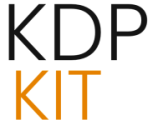Deconstructing the Authorial Business Model: Strategy Over Hobby in the Modern Literary Economy (2025 Update)

The trajectory of a successful author in the mid-2020s is rarely accidental. It is, instead, the result of rigorous application of business principles to a creative endeavor. This approach, viewing authorship as a commercial entity rather than a mere passion project, is the defining characteristic separating long-term sustainability from fleeting creative fulfillment. For an author like Dr. Lisa Dorsey, this strategic lens was not adopted in a vacuum; it was imported directly from decades spent in the results-oriented world of healthcare administration. This article deconstructs Dr. Dorsey’s authorial business model, examining how foundational acumen from a regulated sector provides a critical framework for modern literary entrepreneurship, particularly in the complex landscapes of finance, audience cultivation, and operational resilience as of October 2025.
Applying Foundational Business Acumen to Creative Pursuit
The transition from healthcare executive to authorpreneur was accelerated by the immediate transferability of core business competencies. As Dr. Dorsey noted regarding her own transition, skills honed over nearly three decades in healthcare provided a necessary scaffolding for her literary pursuits, preventing her creative work from devolving into an ad-hoc, hobbyist venture.
Financial Stewardship in the Literary Sector
In the contemporary publishing environment, where organic discovery is increasingly rare, marketing necessitates capital outlay—the fundamental maxim of needing to spend money to make money. Disciplined financial planning is paramount. This planning must account for more than just upfront production costs (editing, design, distribution setup). It must allocate dedicated fiscal strategy for ongoing promotional expenditures and the critical reinvestment into the development of new products, whether books or supplementary offerings. The data reinforces this mandate: for Business-to-Consumer (B2C) brands in 2025, email marketing and paid social media content are cited as the top channels driving Return on Investment (ROI). Treating marketing as a critical, revenue-generating activity—backed by data and budgeting—is what secures platform viability and expansion.
Navigating Tax, Legal, and Regulatory Frameworks as an Author-Entrepreneur
Operating an author business legally and ethically requires adherence to a complex web of regulations, an area where Dr. Dorsey’s prior experience provided a significant advantage. By structuring her authorial income streams and expenses correctly from the outset, she bypassed common pitfalls faced by creators who overlook administrative necessities. This proactive compliance allows the focus to remain squarely on creative output.
The regulatory landscape for small businesses in 2025 continues to evolve, demanding vigilance. A major administrative addition is the Beneficial Ownership Information (BOI) reporting requirement under the Corporate Transparency Act (CTA). Existing businesses, including sole proprietorships structured as LLCs, must ensure compliance by the end of 2025, adding a layer of required data reporting to the Financial Crimes Enforcement Network (FinCEN). Furthermore, recent legislative activity, such as the passage of the One, Big, Beautiful Bill Act (OBBBA) in July 2025, has brought major tax shifts, including the restoration of 100% first-year bonus depreciation and expanded Section 179 expensing limits for capital investments. For the author-entrepreneur, these changes underscore the necessity of professional fiscal management to leverage benefits like R&D expense deductions (now immediately deductible for domestic expenditures starting in 2025) or to correctly manage potential changes to the Qualified Business Income (QBI) deduction structure. Sound business structure is the secure foundation upon which a creative enterprise can reliably scale.
Mastering the Art of Audience Cultivation and Market Engagement
For the contemporary author, the most demanding and continuous challenge is the work of marketing and audience engagement—the shift from secluded creator to active market participant requires constant vigilance and adaptation.
The Daunting Nature of Modern Book Marketing
Modern book marketing is described as daunting because it demands perpetual self-evaluation and external responsiveness. The author must constantly refine their understanding of who the audience is—their evolving demographics, preferences, and pain points—and how to best locate and serve them. This is not a static campaign but an iterative process requiring intellectual agility. A key factor distinguishing success in 2025 is the platform’s engagement metrics; on major retail platforms, it is now understood that unread downloads can actually negatively score a book’s visibility in recommendation algorithms, meaning simple volume is inferior to genuine engagement.
Continuous Evaluation: Understanding and Serving the Reader Base
Success hinges on a deep service orientation. Serving the audience effectively means going beyond sales; it involves translating insights from reviews, comments, and engagement metrics into tangible adjustments in strategy or content focus. In 2025, building reader communities—on platforms like Discord, Facebook Groups, and author websites—is a key marketing trend that increases loyalty and word-of-mouth effectiveness. By listening intently and fostering a sense of belonging, the author remains relevant and indispensable to their community.
Creating Value Propositions: The Role of Enticements in Audience Growth
To incentivize the crucial initial connection, specific value propositions are necessary to encourage a prospect to move from passive awareness to active engagement. The goal is to build a proprietary email list, an asset frequently more valuable than reliance on third-party platforms. By offering something of immediate, high perceived worth, the author creates a powerful incentive for readers to join their ecosystem, laying the groundwork for future communication. The effectiveness of this strategy is supported by 2025 data, which shows email marketing driving the best ROI for B2C brands.
The Critical Function of Lead Magnets in the Modern Author Ecosystem
The development of “lead magnets”—those high-value, freely offered incentives—is a specialized and crucial component of Dr. Dorsey’s modern marketing toolkit. These tools serve as the primary gateway to converting casual interest into dedicated readership and, eventually, paying clientele. They represent a strategic commitment to providing value upfront, establishing expertise long before a sales pitch is deployed.
The Strategic Design and Acquisition of Digital Incentives
An effective lead magnet must be strategically designed: it needs to solve a small, immediate problem for the target reader, be easily consumable, and directly relate to the author’s core work. The process is often professionalized; Dr. Dorsey herself utilized paid help for the design of her branding and lead magnets.
Current best practices in 2025 emphasize specificity and ease of consumption. Effective author-specific lead magnets include:
The acquisition process itself must be seamless, requiring minimal friction—a simple exchange of an email address for immediate access. Landing pages should be optimized, limiting forms to 3–5 fields to drastically reduce abandonment rates.
Integrating Lead Magnets into the Broader Income Strategy
While given away freely, the role of the lead magnet is entirely strategic within the larger income model; it sits at the top of the sales funnel. The goal is to move the newly acquired lead through a calculated sequence—often an automated email nurturing sequence—that continually demonstrates value, addresses deeper challenges, and eventually introduces paid offerings like books, courses, or specialized modules. Thus, the lead magnet is a sophisticated tool for list building and cultivating the trust necessary for subsequent commercial transactions.
Lessons in Operational Excellence: Insights from Prior Business Ventures
Dr. Dorsey’s proven ability to manage the complexities of her author business stems significantly from her operational experience in the healthcare sector. While the product shifted from clinical service to literary content, the fundamental requirements for effective organization, resource management, and oversight remained constant, offering invaluable foresight into potential operational bottlenecks.
Human Resource Management as the Apex Challenge
Reflecting on nearly three decades running a healthcare business, Dr. Dorsey identified human resource management as the singular most difficult operational hurdle. This challenge encompasses staffing, team dynamics, and performance management. Even within a seemingly solitary author business, managing any hired help—virtual assistants, contractors for website design, or paid help for lead magnet development—requires a sophisticated understanding of motivation, delegation, and clear communication to maintain quality and efficiency across outsourced tasks.
Supply Chain Stability in a Service-Oriented Industry
A profoundly critical operational concern is ensuring the stability of the “supply chain.” While a healthcare business has tangible supply needs, an author business has its own essential components: software subscriptions, marketing tools, editing and design services, and printing/distribution fulfillment. Maintaining a stable and reliable network of vendors and resources is crucial. Any disruption in access to these necessary components directly impedes the ability to produce, market, and deliver products or services, highlighting the interconnectedness of operational logistics.
Navigating Unprecedented External Disruptions: The COVID Experience
The global events surrounding the COVID era served as the ultimate stress test for virtually every business. For Dr. Dorsey’s established healthcare firm, this represented a period of profound crisis that transcended typical business challenges, reshaping her understanding of leadership, resilience, and fundamental responsibilities.
The Intertwined Crises of Business Survival and Personal Well-being
The pandemic created a unique duality of threat. Existentially, there was the need for major operational pivoting simply to ensure survival, not just growth. This was inextricably linked to the personal and family safety of herself, her employees, and her clientele. The decisions required during this phase were intensely personal, often forcing choices that straddled the line between professional obligation and the protection of loved ones, all within an environment of scarce resources and rapidly evolving, often contradictory, guidance.
Leadership Through Ambiguity and Evolving Mandates
The environment of uncertainty demanded a style of leadership capable of operating effectively with incomplete information. New rules and regulations emerged constantly with little clear direction. Leading required a high tolerance for ambiguity, the ability to make sound judgments based on the best available data, and the fortitude to guide a team through constant change. Post-pandemic leadership in 2025 is characterized by a continuing emphasis on leading with purpose, not just profit, fostering loyalty through clear vision and commitment to societal impact. Furthermore, leaders are expected to champion flexibility and inclusion, prioritizing human-centric cultures to drive innovation.
Fostering Resilience Through Collective Community Action
Despite the overwhelming stress, the organizational response demonstrated the power of communal bonds. When faced with staffing shortages due to quarantine or personal necessity, the team engaged in collective problem-solving, implementing triage systems to manage caseloads and provide relief for overburdened staff. This spirit of shared effort and visible care became a crucial stabilizing force, allowing the organization to navigate the crisis by relying on mutual support and a unified commitment to maintaining essential services. This echoes 2025 leadership principles that stress building resilience by fostering collaboration and trust within teams.
The Path Forward: Sustained Growth and Product Diversification
Emerging from intense periods of disruption and successfully establishing a new career path, the focus shifts to ensuring the longevity and scalable growth of the author platform. This requires a forward-looking strategy that continuously optimizes investment and expands the portfolio of offerings beyond the initial published work to capture maximum market potential.
Balancing Investment with Return in Marketing Efforts
The ongoing commitment to marketing necessitates a disciplined, analytical approach to resource allocation. Future success hinges on the author’s ability to consistently evaluate the Return on Investment (ROI) for every dollar spent on promotion, advertising, and platform development. The imperative is to strategically invest capital where data shows the highest likelihood of converting prospects into engaged, long-term followers and customers. For B2C authors, this means rigorously optimizing email marketing campaigns and targeted social media spend, while also ensuring content is driving high engagement, as lower engagement rates can indicate poor algorithmic reception.
Developing a Robust Portfolio of Author Offerings
Relying solely on book sales is rarely a viable long-term strategy for sustainable authorship. To maximize revenue potential and reader engagement, sustained success requires developing a dynamic array of products. The path forward involves the continuous conceptualization and creation of new offerings: supplementary digital guides, advanced workbooks, specialized coaching modules, or exclusive community access. This diversification ensures the platform can meet the needs of readers at various stages—from those seeking an encouraging story to those requiring deep, practical implementation strategies. This strategy aligns with the current trend toward hyper-personalization in marketing, catering to specific reader segments with tailored value and securing the platform’s relevance for the foreseeable future. The business of authorship, anchored by strategic discipline, becomes a resilient, multi-faceted enterprise.







